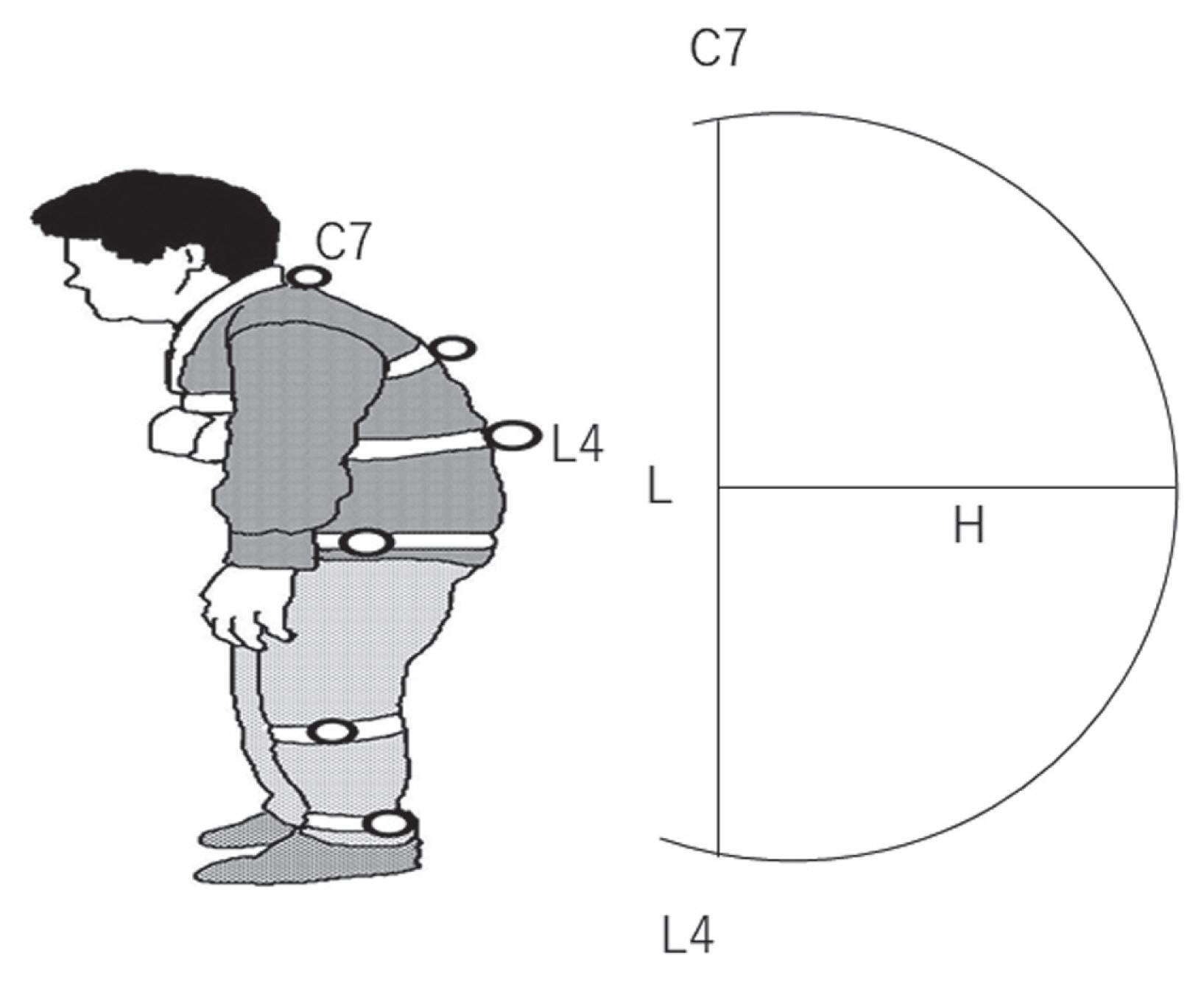1. Balzini L, Vannucchi L, Benvenuti F, Benucci M, Monni M, Cappozzo A, et al. Clinical characteristics of flexed posture in elderly women. J Am Geriatr Soc 2003;51:1419–26.


8. Hirano K, Imagama S, Hasegawa Y, Wakao N, Muramoto A, Ishiguro N. Impact of spinal imbalance and back muscle strength on locomotive syndrome in community-living elderly people. J Orthop Sci 2012;17:532–7.


12. Hirano K, Imagama S, Hasegawa Y, Ito Z, Muramoto A, Ishiguro N. The influence of locomotive syndrome on health-related quality of life in a community-living population. Mod Rheumatol 2013;23:939–44.


13. Muraki S, Oka H, Akune T, En-yo Y, Yoshida M, Nakamura K, et al. Association of occupational activity with joint space narrowing and osteophytosis in the medial compartment of the knee: the ROAD study (OAC5914R2). Osteoarthritis Cartilage 2011;19:840–6.


15. Milne JS, Lauder IJ. Age effects in kyphosis and lordosis in adults. Ann Hum Biol 1974;1:327–37.


16. Seichi A, Hoshino Y, Doi T, Akai M, Tobimatsu Y, Iwaya T. Development of a screening tool for risk of locomotive syndrome in the elderly: the 25-question Geriatric Locomotive Function Scale. J Orthop Sci 2012;17:163–72.


17. Kobayashi T, Morimoto T, Shimanoe C, Ono R, Otani K, Mawatari M. Development of a simple screening tool based on the 5-question geriatric locomotive function scale for locomotive syndrome. J Orthop Sci 2022;27:913–20.


18. Chen LK, Liu LK, Woo J, et al. Sarcopenia in Asia: consensus report of the Asian Working Group for Sarcopenia. J Am Med Dir Assoc 2014;15:95–101.


19. Schneider DL, von Mühlen D, Barrett-Connor E, Sartoris DJ. Kyphosis does not equal vertebral fractures: the Rancho Bernardo study. J Rheumatol 2004;31:747–52.

23. Limburg PJ, Sinaki M, Rogers JW, Caskey PE, Pierskalla BK. A useful technique for measurement of back strength in osteoporotic and elderly patients. Mayo Clin Proc 1991;66:39–44.


24. Woods GN, Huang MH, Lee JH, et al. Factors associated with kyphosis and kyphosis progression in older men: the MrOS study. J Bone Miner Res 2020;35:2193–8.

25. Porto JM, Nakaishi AP, Cangussu-Oliveira LM, Freire RC Junior, Spilla SB, Abreu DC. Relationship between grip strength and global muscle strength in community-dwelling older people. Arch Gerontol Geriatr 2019;82:273–8.


28. Tominaga R, Fukuma S, Yamazaki S, et al. Relationship between kyphotic posture and falls in community-dwelling men and women: the Locomotive Syndrome and Health Outcome in Aizu Cohort Study. Spine (Phila Pa 1976) 2016;41:1232–8.

32. Kado DM. The rehabilitation of hyperkyphotic posture in the elderly. Eur J Phys Rehabil Med 2009;45:583–93.

34. Taal MW, Cassidy MJ, Pearson D, Green D, Masud T. Usefulness of quantitative heel ultrasound compared with dual-energy X-ray absorptiometry in determining bone mineral density in chronic haemodialysis patients. Nephrol Dial Transplant 1999;14:1917–21.


37. Iizuka Y, Iizuka H, Mieda T, Tajika T, Yamamoto A, Takagishi K. Population-based study of the association of osteoporosis and chronic musculoskeletal pain and locomotive syndrome: the Katashina study. J Orthop Sci 2015;20:1085–9.













